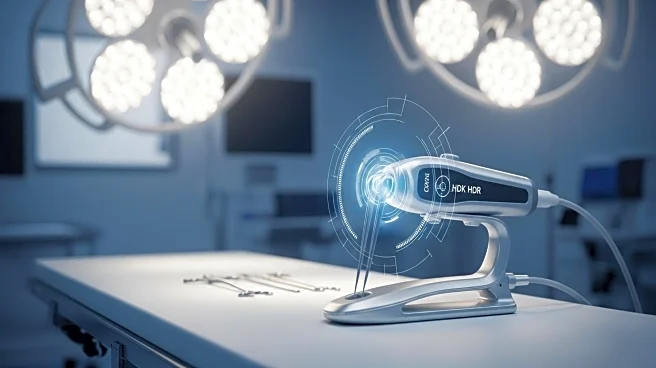What is the story about?
What's Happening?
Pulse Biosciences, Inc. has announced the presentation of early clinical data on its nPulse Cardiac Surgical System at the 39th European Association for Cardio-Thoracic Surgery Annual Meeting. The nPulse technology utilizes nanosecond Pulsed Field Ablation energy to treat atrial fibrillation, offering a non-thermal approach to cell ablation. The FDA recently approved an IDE study for the system, marking a significant milestone in its development. The presentation will feature clinical evidence supporting the safety and efficacy of nPulse, highlighting its potential impact on cardiothoracic surgery.
Why It's Important?
The nPulse Cardiac Surgical System represents a novel approach to treating atrial fibrillation, a common and challenging cardiac condition. By providing a non-thermal method of cell ablation, the technology could reduce complications associated with traditional thermal ablation techniques. The FDA's approval of the IDE study underscores the system's potential to advance cardiac care, offering new treatment options for patients and clinicians. The presentation at a major cardiothoracic surgery meeting highlights the growing interest and validation of this innovative technology.
What's Next?
Pulse Biosciences plans to continue evaluating the nPulse system through clinical studies, aiming to further establish its safety and efficacy. The company is also exploring additional applications for the technology in other medical fields, such as surgical soft tissue ablation. As clinical data accumulates, the nPulse system could gain broader acceptance and integration into standard cardiac care practices, potentially influencing treatment guidelines and protocols.
Beyond the Headlines
The development of the nPulse Cardiac Surgical System reflects broader trends in bioelectric medicine, which seeks to leverage electrical energy for therapeutic purposes. This approach could lead to significant advancements in various medical fields, offering less invasive and more precise treatment options. The technology's potential to improve patient outcomes and reduce healthcare costs aligns with ongoing efforts to enhance the quality and efficiency of medical care.
AI Generated Content
Do you find this article useful?

















